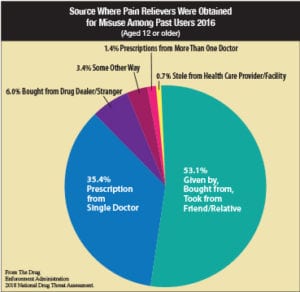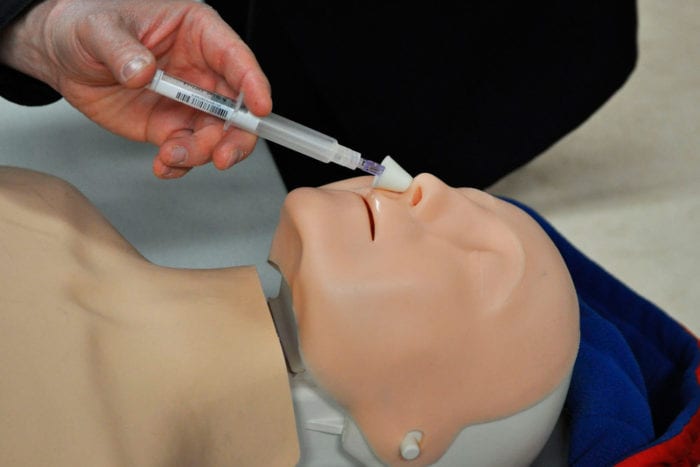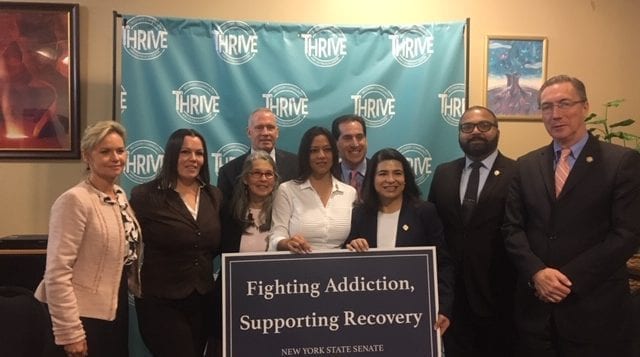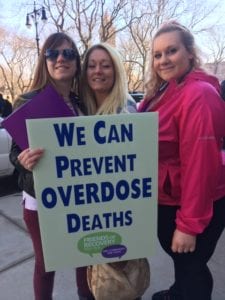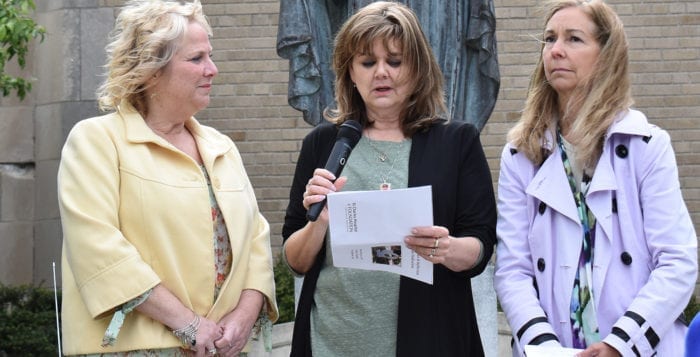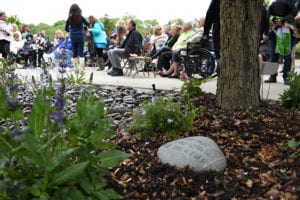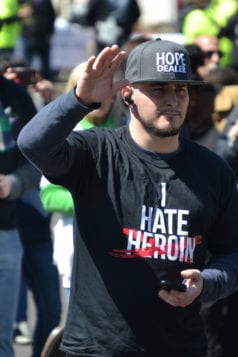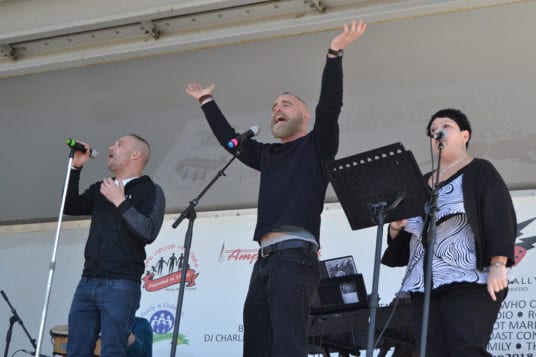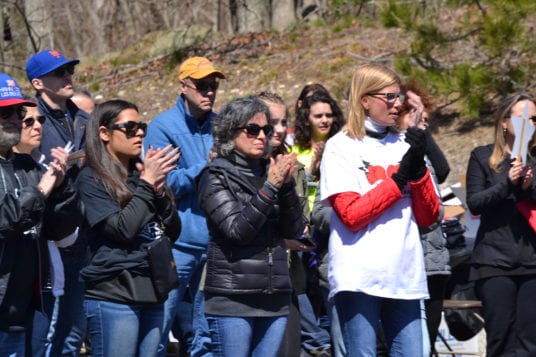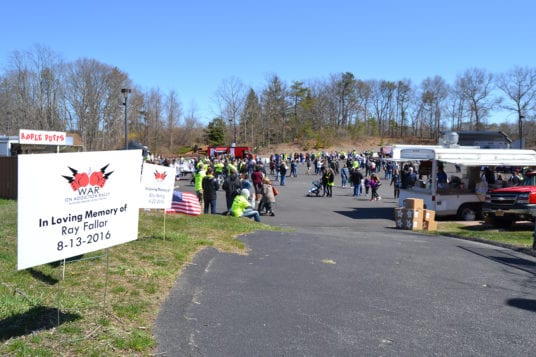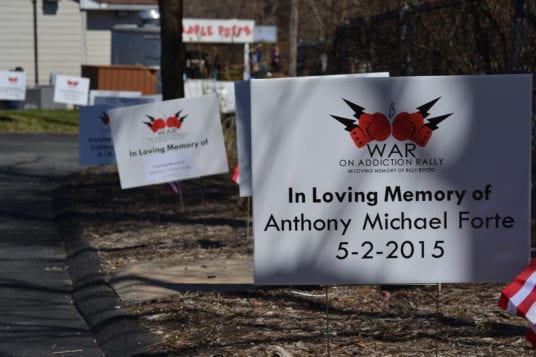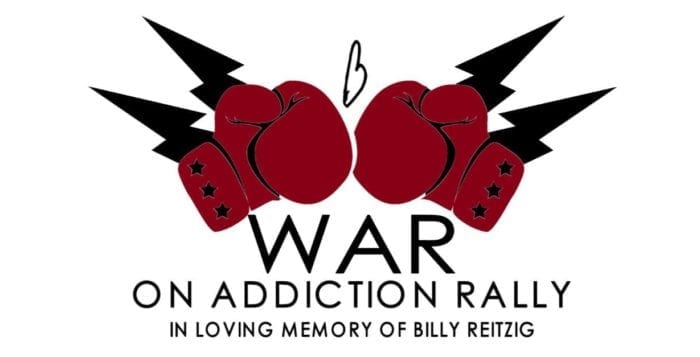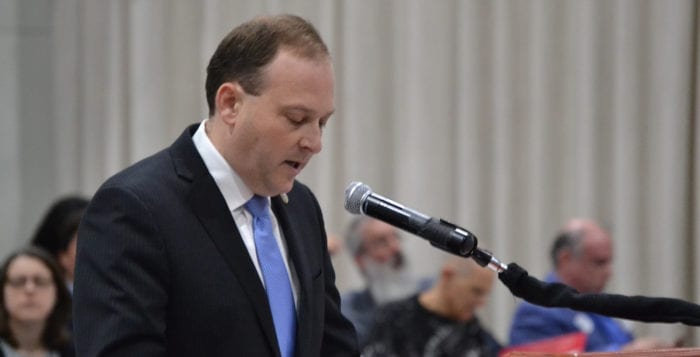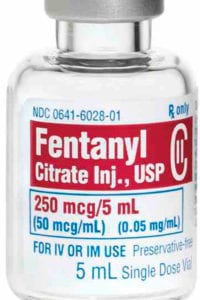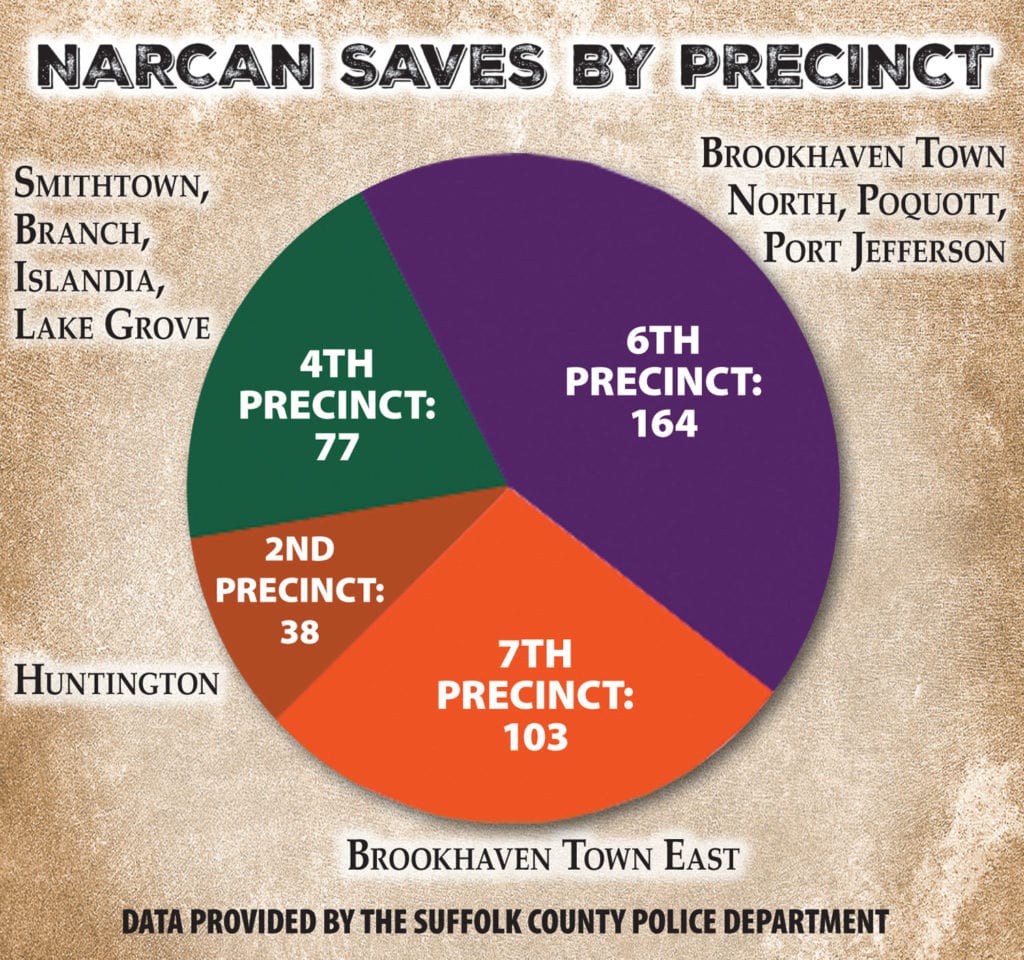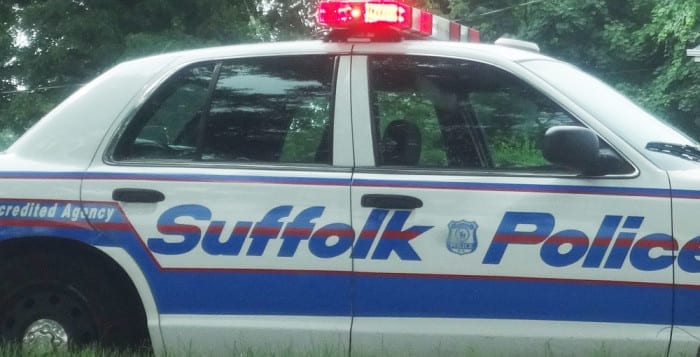At Stony Brook University Renaissance School of Medicine, a new generation of doctors and dentists are involved in a novel approach to managing the opioid epidemic. The training includes instruction from reformed narcotic users, who act as teachers.
A 25-year-old woman recently explained to the first-year students how she became addicted to opioids at the age of 15, when a friend came over with Vicodin prescribed by a dentist after a tooth extraction.
Addiction, she said, is like having a deep itch inside that desperately needs to be scratched.
“There was nothing that could stand between me and getting high,” said the young woman, who wants to remain anonymous. “Most of the time it was my only goal for the day. At $40 a pill, I quickly switched to heroin which costs $10.”
The university’s Assistant Dean for Clinical Education Dr. Lisa Strano-Paul, who helped coordinate the session, said that “patients as teachers” is widely practiced in medical education. This is the first year reformed narcotic users are participating in the program.
“People’s stories will stick with these medical students for the rest of their lives,” she said. “Seeing such an articulate woman describe her experiences was impactful.”
Gerard Fischer, a doctor of dental surgery candidate from St. James, took part in the patient-as-teacher session on narcotics.
“You learn empathy, a quality people want to see in someone practicing medicine,“ Fischer said. “People don’t choose to become addicted to narcotics. So, you want to understand.”
After working in dental offices over the last several years, he’s noticed that habits for prescribing painkillers are changing.
“Dental pain is notoriously uncomfortable because it’s in your face and head,” he said. “No one wants a patient to suffer.” Pain management, though, requires walking a fine line, he added, saying, “Patient awareness is increasing, so many of them now prefer to take ibuprofen and acetaminophen rather than a prescription narcotic, which could be a reasonable approach.”
Hearing the young woman tell her story, he said, will undoubtedly influence his decision-making when he becomes a practicing dentist.
An estimated 180 medical and dental students attended the training last month. Overall, Strano-Paul said she’s getting positive feedback from the medical students about the session.
The woman who overcame addiction and shared her insights with the medical professionals, also found the experience rewarding.
We respect her request to remain anonymous and are grateful that she has decided to share her story with TBR News Media. For the rest of this article, we shall refer to her as “Claire.”
Faith, hope and charity
“I told the doctors that recovery has nothing to do with science,” Claire said. “They just looked at me.”
Claire was addicted to drugs and alcohol for seven years and went to rehab 10 times over the course of five years.
“I did some crazy things, I jumped out of a car while it was moving,” Claire said, shaking her head in profound disbelief.
She leapt from the vehicle, she said, the moment she learned that her family was on their way to a rehab facility. Fortunately, she was unharmed and has now been off pain pills and drugs for close to six years. She no longer drinks alcohol.
“Yes, it is possible to recover from addiction,” Claire said.
People with addiction issues feel empty inside, Claire explained, while gently planting her fist in her sternum. She said that once her counselor convinced her to pray for help and guidance, she was able to recover.
“Somehow praying opens you up,” she said.
Claire was raised Catholic and attended Catholic high school but says that she’s not a religious person.
“I said to my counselor, “How do I pray, if I don’t believe or know if there’s a God?”
She came to terms with her spirituality by appreciating the awe of nature. She now prays regularly. Recovery, she said, is miraculous.
Alcoholics Anonymous’ 12-step regimen, first published in 1939 in the post-Depression era, outlines coping strategies for better managing life. Claire swears by the “big book,” as it’s commonly called. She carefully read the first 165 pages with a counselor and has highlighted passages that taught her how to overcome addictions to opioids and alcohol. Being honest, foregoing selfishness, praying regularly and finding ways to help others have become reliable sources of her strength.
Spirituality is the common thread Claire finds among the many people she now knows who have recovered from addiction.

Medication-assisted therapy
Personally, Claire recommends abstinence over treating addiction medically with prescription drugs such as buprenorphine. The drug, approved by the U.S. Food & Drug Administration since 2002, is a slow-release opioid that suppresses symptoms of withdrawal. When combined with behavior therapy, the federal government recommends it as treatment for addiction. Medication alone, though, is not viewed as sufficient. The ultimate goal of medication-assisted therapy, as described on the U.S. Department of Health & Human Services website on the topic, is a holistic approach to full recovery, which includes the ability to live a self-directed life.
“Medication-assisted therapy should not be discounted,” Strano-Paul said. “It improves the outcome and enables people to hold jobs and addresses criminal behavior tendencies.”
While the assistant dean is not involved with that aspect of the curriculum, the topic is covered somewhat in the clerkship phase of medical education during sessions on pain management and when medical students are involved in more advanced work in the medical training, she said.
The field, though, is specialized.
The federal government requires additional certification before a medical practitioner can prescribe buprenorphine. Once certified, doctors and their medical offices are further restricted to initially prescribe the medicine to only 30 patients annually. Critics say no other medications have government-mandated patient limits on lifesaving treatment.
The Substance Abuse and Mental Health Services Administration, a division of the U.S. Department of Health & Human Services, considers the therapy to be “misunderstood” and “greatly underused.”
In New York state, 111,391 medical practitioners are registered with the U.S. Drug Enforcement Administration to prescribe opioids and narcotics. Only 6,908 New York practitioners to date are permitted to prescribe opioids for addiction treatment as at Aug. 31.
Strano-Paul for instance, pointed out that she can prescribe opioids, but is prohibited from prescribing the opioid-based drug used for addiction therapy.
The narcotics education program is still evolving, Strano-Paul said.
New medical student training now also includes certification for Narcan, the nasal spray antidote that revives opioid overdose victims.
“It saves lives,” Strano-Paul said.
In Suffolk County in 2017, 424 people died from an opioid overdose, which was 41 percent higher than the state average, according to a study titled “The Staggering Cost of Long Island’s Opioid Crisis.” The county is aware of 238 potentially lifesaving overdose reversals as of June 30 attributed to Narcan this year alone. Since 2012, Narcan has helped to save the lives of 3,864 people in the county.
As for Claire, now a mother, she delivered her children through C-section. In the hospital, she was offered prescription opioids for pain.
“No one will ever see me again, if you give me those pills,” she said.
